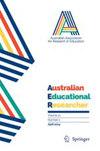麻烦制造者?频繁的教师推荐在扩大种族学科不均衡中的作用
IF 2.4
3区 教育学
Q2 EDUCATION & EDUCATIONAL RESEARCH
引用次数: 3
摘要
教师对学生行为的理解决定了学生是否有问题,是否受到正式的纪律处分。地位类别,如种族,可以影响对学生罪责的看法,但教师对学生不当行为的初步识别在多大程度上加剧了纪律接受中的种族不成比例是未知的。本研究首次系统地记录了加州一个大型、多样化的城市学区的教师使用办公室纪律转介(odr)的情况,明确了所有odr中被转介者和转介个体的身份。我们根据一年中odr的数量来确定表现出广泛推荐行为的教师,或前5%的推荐人,并评估他们对学科差异的贡献。我们发现,在黑人-白人和西班牙裔-白人的比较中,“顶级推荐人”有效地将odr的种族差距扩大了一倍。这些差距主要是由于黑人和西班牙裔学生因人际犯罪和蔑视行为而被发放的odr数量较多造成的,并且部分转化为停学方面的种族差距。顶级推荐人服务的学校网站的级别和种族构成,以及他们的个人特征,似乎都可以解释他们频繁的推荐人行为。针对顶级转诊者的支持和干预可能提供一个减少种族学科差距的重要机会。本文章由计算机程序翻译,如有差异,请以英文原文为准。
Troublemakers? The Role of Frequent Teacher Referrers in Expanding Racial Disciplinary Disproportionalities
Teachers’ sensemaking of student behavior determines whether students get in trouble and are formally disciplined. Status categories, such as race, can influence perceptions of student culpability, but the degree to which teachers’ initial identification of student misbehavior exacerbates racial disproportionality in discipline receipt is unknown. This study provides the first systematic documentation of teachers’ use of office discipline referrals (ODRs) in a large, diverse urban school district in California that specifies the identity of both the referred and referring individuals in all ODRs. We identify teachers exhibiting extensive referring behavior, or the top 5% referrers, based on the number of ODRs they make in a given year and evaluate their contributions to disciplinary disparities. We find that “top referrers” effectively double the racial gaps in ODRs for both Black-White and Hispanic-White comparisons. These gaps are mainly driven by higher numbers of ODRs issued for Black and Hispanic students due to interpersonal offences and defiance and also partially convert to racial gaps in suspensions. Both the level and racial compositions of the school sites where top referrers serve and their personal traits seem to explain some of their frequent referring behavior. Targeting supports and interventions to top referrers might afford an important opportunity to reduce racial disciplinary gaps.
求助全文
通过发布文献求助,成功后即可免费获取论文全文。
去求助
来源期刊

Australian Educational Researcher
EDUCATION & EDUCATIONAL RESEARCH-
CiteScore
4.60
自引率
14.30%
发文量
81
期刊介绍:
The Australian Educational Researcher is the international, peer reviewed journal published by AARE. The Australian Educational Researcher is published three times a year and is a Thomson (ISI) indexed journal. The aim of AER is to:Promote understandings of educational issues through the publication of original research and scholarly essays.Inform education policy through the publication of papers utilising a range of research methodologies and addressing issues of theory and practice.Provide a research forum for education researchers to debate current problems and issues.Provide an international and national perspective on education research through the publication of book reviews, scholarly essays, original quantitative and qualitative research and papers that are methodologically or theoretically innovative.AER welcomes contributions from a variety of disciplinary perspectives on any level of education.
 求助内容:
求助内容: 应助结果提醒方式:
应助结果提醒方式:


